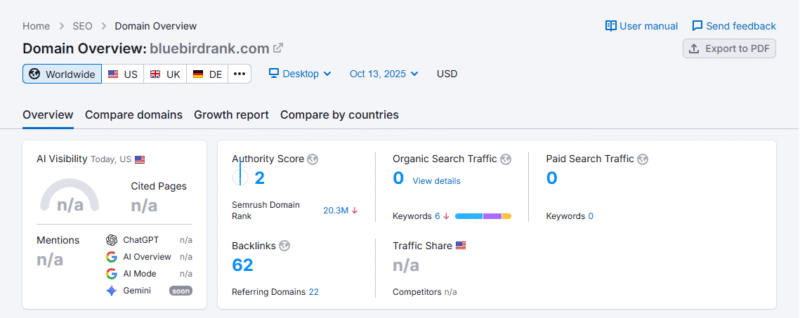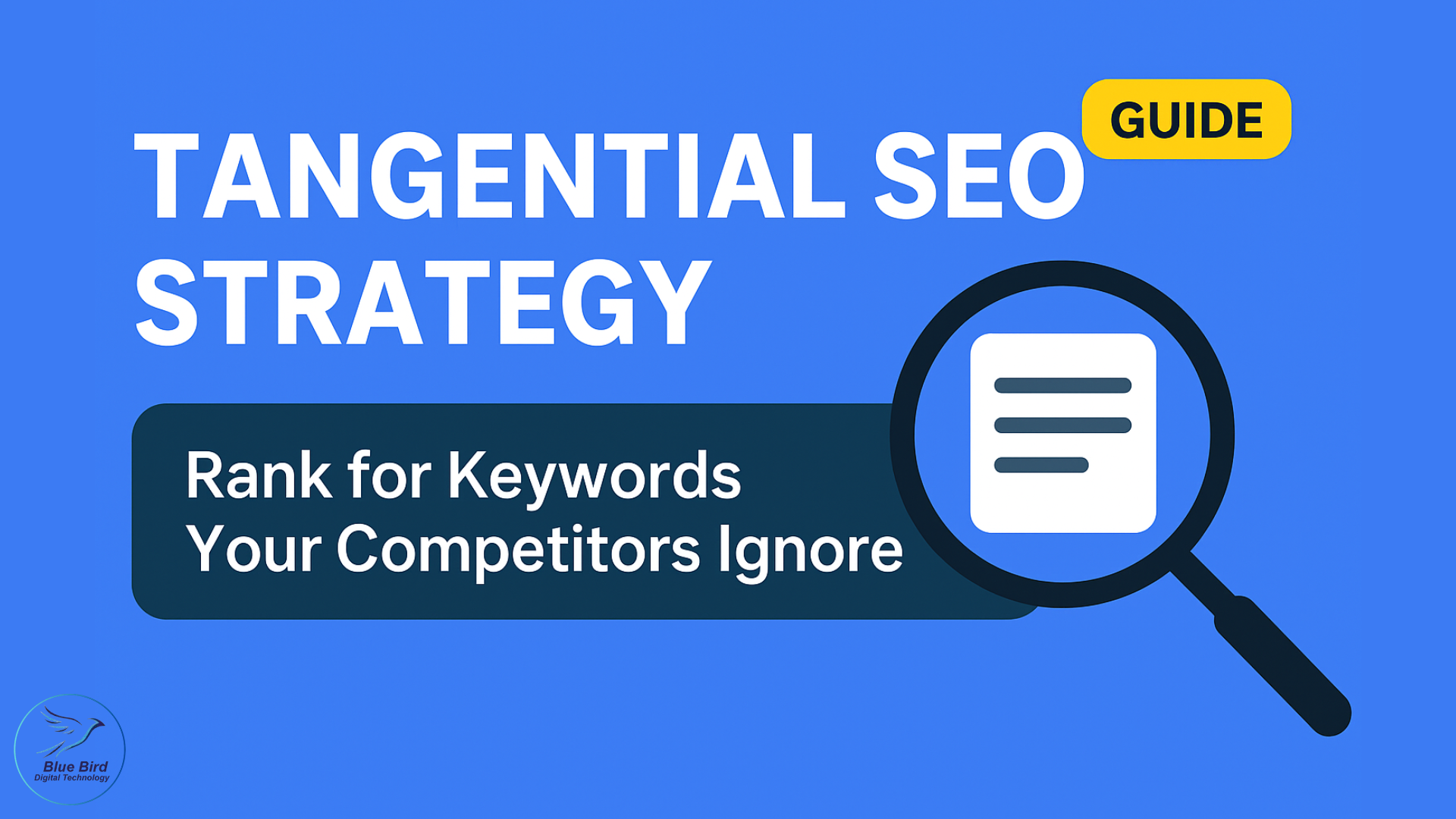Why You Need to Think Beyond Traditional SEO
Every marketer wants to rank higher on Google — but most fight for the same keywords. That’s where the Tangential SEO strategy changes the game.
Instead of chasing high-competition keywords, this approach helps you rank for unique, low-competition topics that your competitors haven’t even thought about.
The Tangential SEO strategy focuses on creating content that connects with your audience’s broader interests while still linking back to your core business. It’s one of the smartest ways to earn backlinks, attract traffic, and build authority without keyword stuffing or massive budgets.
In this complete guide, you’ll learn:
-
What the Tangential SEO strategy is
-
How to find tangential keywords your competitors miss
-
How to create and optimize content for higher rankings
-
Real-world examples and results-driven techniques
Let’s dive into how this Tangential SEO strategy can help your site grow faster and smarter.
What Is Tangential SEO?

Tangential SEO is the process of creating content around topics not directly related to your core product or service but still relevant to your audience’s interests.
It’s called “tangential” because these topics sit at the edge of your niche — not at the center.
Example:
If you run a project management software, your direct keywords are “project management tools” or “task management software.”
But with Tangential SEO, you could target topics like:
-
“Habits of highly productive teams”
-
“Remote work communication tips”
-
“Psychology of workplace motivation”
None of these are directly about your product, yet they attract your target audience — professionals who might later need your software.
Tangential SEO helps you build awareness, earn links, and dominate SERPs beyond your usual keyword list.
(Image: Visual example showing core topic vs. tangential topics around it.)
Why Tangential SEO Matters in 2025
Google’s algorithm has evolved. It no longer rewards keyword-stuffed, repetitive content — it rewards useful, unique, and audience-focused content.
Here’s why Tangential SEO is crucial today:
-
Content Saturation – Everyone is writing about the same keywords. Tangential SEO gives you space where competition is lower.
-
E-E-A-T (Experience, Expertise, Authority, Trust) – Google loves diverse, insightful content that shows broad understanding of a topic.
-
User Intent Variety – Users don’t always search for your product directly. Tangential topics catch them earlier in their journey.
-
Natural Backlinks – Unique angles attract journalists and bloggers looking for fresh stories.
In short, Tangential SEO builds a brand ecosystem — not just a keyword cluster.
Key Benefits of Tangential SEO
1. Earn Press Coverage and Backlinks
When you publish fresh, data-driven tangential content, journalists notice.
Imagine writing “We Analyzed 10,000 Remote Job Listings — Here’s What Employers Really Want.”
That’s not about your product — but it’s linkable, shareable, and credible.

(Image: Example screenshot showing backlinks from authority sites.)
2. Expand Brand Reach
Instead of talking only about your core topic, you start connecting with your audience’s lifestyle, pain points, and interests.
A fitness app could talk about nutrition, stress, or sleep science — all tangential yet relevant.
3. Rank Faster for Low-Competition Keywords
Most marketers ignore these topics, meaning you can rank faster with fewer backlinks.
4. Increase Engagement
Readers love stories and new angles. Tangential content breaks monotony and builds loyal readership.
5. Prevent Content Fatigue
Writing only about “SEO tools,” “best keywords,” or “how to rank” becomes boring. Tangential content opens creative doors.
How to Find Tangential SEO Opportunities
Here’s the real power — discovering topics that are both relevant and untapped.
Let’s go step-by-step
Step 1: Mind Mapping Your Audience
Start from your core product, then branch out into related topics your users care about.
Example: If you sell eco-friendly furniture, your mind map could look like this:
-
Core: Sustainable Furniture
-
Branches: Home Decor, Minimalism, Green Living, DIY Projects
-
Tangents: Climate Change Lifestyle, Zero-Waste Hacks, Interior Psychology
From here, topics like “How Minimalist Living Can Improve Mental Health” become potential tangential goldmines.
(Image: Mind map showing “Eco Furniture” → “Green Lifestyle” → “Mental Health”)
Step 2: Use AI Tools to Generate Tangential Keywords
Tools like ChatGPT, Gemini, or Claude can find creative tangential ideas faster than manual brainstorming.
Prompt example:
“Act as an SEO strategist. My company sells productivity software. Suggest tangential keywords that target the same audience but are not directly about productivity tools.”
AI may suggest keywords like:
-
“Digital burnout recovery”
-
“Work-from-home culture”
-
“Morning routines for focus”
These are tangential — perfect to attract your target users in a new way.
(Image: Example AI prompt and keyword output)
Step 3: Mine Reddit and Quora Discussions
Reddit and Quora are goldmines for real audience insights.
Search your niche and explore what people discuss beyond your direct keywords.
Example:
If you run a blog monetization platform, search for “ad revenue” on Reddit.
You might find discussions about:
-
Ad fatigue
-
Audience trust
-
Website layout issues
Each can spark a tangential article like:
“5 Design Mistakes That Kill Your Website’s Ad Revenue.”
(Image: Screenshot of Reddit thread highlighting keyword opportunities)
Step 4: Use Competitor Gap Tools (Ahrefs, Semrush)
Plug your competitors’ sites into Ahrefs Content Gap Tool or Semrush Topic Research.
You’ll see which keywords they aren’t targeting — that’s your opening.
(Image: Ahrefs Content Gap Tool result example)
Real-World Tangential SEO Examples
1. Michelin: Turning Tires into Fine Dining Authority
The Michelin Guide was never about tires — yet it became one of the most respected restaurant authorities.
By connecting “travel and food” with “driving,” Michelin expanded its reach massively.
2. Red Bull: From Energy Drink to Lifestyle Icon
Instead of writing about “energy drinks,” Red Bull focused on extreme sports, art, and creativity.
Now, it owns entire tangential ecosystems — from Formula 1 to music festivals.
3. Canva: Beyond Design Tools
Canva’s blog covers topics like marketing, freelancing, entrepreneurship, and productivity.
These attract creators who may not need Canva today — but eventually will.
4. HubSpot: Not Just CRM
HubSpot writes about psychology, storytelling, and social media culture — topics tangentially linked to marketing.
(Image: Visual grid showing 4 brand examples and tangential areas)
Step-by-Step: How to Create Tangential Content That Ranks
-
Pick the Right Keyword
Choose a tangential keyword with medium search volume and low competition. -
Validate Intent
Search the keyword on Google — what kind of content ranks? Blog? Data? Opinion? -
Add Unique Data or Perspective
Use internal data, surveys, or collaborations. -
Tie It Back to Your Brand
Even if it’s tangential, subtly connect it back to your product or expertise. -
Optimize for SEO (Yoast-Friendly)
-
Use focus keyphrase in title, first paragraph, subheading, and meta description
-
Add internal/external links
-
Keep sentences under 20 words
-
Add transition words (“therefore”, “however”, “in addition”)
-
-
Add Engaging Visuals
Screenshots, infographics, and charts improve dwell time.
(Image: Screenshot example layout for tangential article)
Promoting Tangential SEO Content
You’ve written great tangential content — now it’s time to amplify it.
-
Submit to HARO / Featured.com: Journalists look for original research.
-
Outreach via LinkedIn: Share insights with industry creators.
-
Convert into Short Videos or Carousels: Extend reach across formats.
-
Guest Posts: Offer tangential insights to related blogs for backlinks.
(Image: Example HARO pitch email)
Measuring Tangential SEO Success
Track these metrics to know what’s working:
| Metric | Tool | Goal |
|---|---|---|
| Organic Traffic | Google Analytics | Rising trend |
| Backlinks | Ahrefs / Semrush | High-quality referring domains |
| Engagement | GA / Hotjar | Increased dwell time |
| Conversions | CRM / GA4 | Visitors later buy or sign up |
(Image: Dashboard showing organic traffic growth)
Common Mistakes to Avoid in Tangential SEO Strategy
Going too off-topic — irrelevant tangents confuse Google and readers.
Writing fluff — tangential doesn’t mean random.
Ignoring keyword optimization.
Forgetting to link back to core content.
Stay relevant but creative — that’s the balance.
Tangential SEO: FAQs
Q1. What is tangential content?
Content that’s indirectly related to your business but still relevant to your target audience’s interests.
Q2. How is tangential SEO different from topical authority?
Topical SEO builds depth; tangential SEO builds breadth. You need both for full dominance.
Q3. Can small websites use Tangential SEO?
Absolutely! In fact, it’s the best way to compete against big brands without massive budgets.
Q4. How often should I publish tangential content?
1–2 tangential posts for every 3–4 topical posts is a good balance.
Conclusion: The Future Belongs to Tangential Thinkers
SEO in 2025 isn’t just about keywords — it’s about understanding people.
Tangential SEO helps you reach your audience before they even know they need you.
It builds trust, authority, and curiosity — the three pillars of long-term growth.
If your competitors are stuck fighting for the same old keywords, use tangential content to break free and dominate smarter.
Pro Tip: Next time you brainstorm blog ideas, ask — “What’s something my audience cares about that no one in my niche is writing about?”
That’s your next tangential SEO win.

